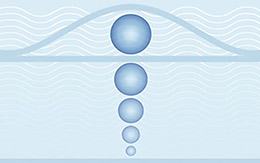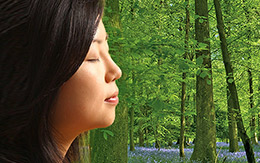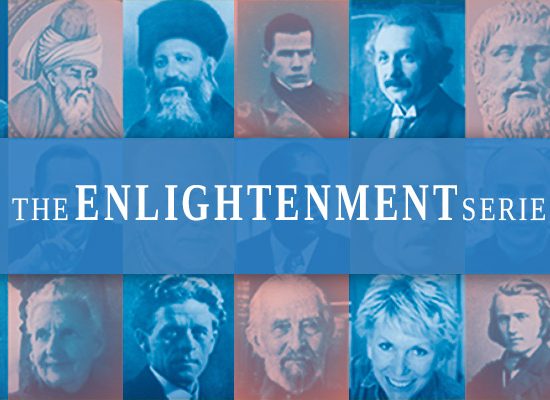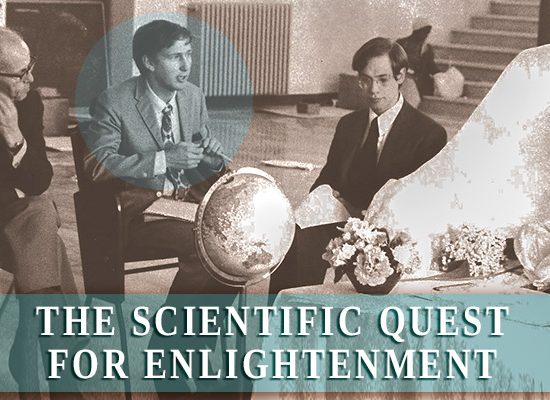I still remember my first meditation. After being instructed in TM, I was escorted to a small room to meditate on my own. A few minutes into the meditation, I was surprised to feel my shoulders drop. It felt so good. I hadn’t even been aware that there was tension in my shoulders. A few minutes later, they released a second time.
I kept meditating, and then the thought came, “I wonder if my shoulders will drop again?” Suddenly I realized there was nothing more to release, my shoulders were totally relaxed. That was the moment I knew that TM really worked.
Since then, I’ve discovered that hundreds of scientific research studies have shown that the Transcendental Meditation® (TM) technique does indeed work, offering deep relaxation for the body, a calmer, more alert mind, and a wide range of proven health benefits.
But there is one long-term benefit this simple practice brings that’s even more amazing. And that is the development of our consciousness.
Beyond Relaxation to Transcendental Consciousness
The experience of the mind settling down, or transcending, produces deep rest for the body and increased orderliness in the brain. But equally important, transcending is a doorway to the field of inner silence that exists within us all.
The experience of the mind settling down, or transcending, produces deep rest for the body and increased orderliness in the brain. But equally important, transcending is a doorway to the field of inner silence that exists within us all.

During TM practice the mind settles down to quieter levels of thought, sometimes transcending thought altogether and experiencing a state of Transcendental Consciousness, or the Self.
Maharishi calls this inner field our unbounded or big “Self,” in contrast to our small “self” that thinks, speaks, and acts in the outer world. He also refers to this field as absolute Being, Transcendental Consciousness, or Self-consciousness.
In the Science of Being and Art of Living, Maharishi writes: “We have seen that during Transcendental Meditation the conscious mind arrives at the transcendental field of absolute Being of unmanifested nature. Here in this field, the mind transcends all relativity and is found in the state of absolute Being.
“The mind has transcended all limits of the experience of thought and it is left by itself in the state of pure consciousness. This state of pure consciousness, or state of absolute pure Being, is called Self-consciousness.”
Awakening to Cosmic Consciousness
As I continued to practice TM, I began to notice that the deep relaxation in my body and calmness in my mind that I experienced during meditation was seeping out into my activity. My shoulders were more relaxed and my mind was clearer and calmer as I moved through my day.
Little did I know that I was taking the first step of awakening to what Maharishi called Cosmic Consciousness. As I began to read the profound knowledge in Science of Being and Art of Living, my experiences during meditation and in activity began to make more sense. It turns out that knowledge is just as essential as experience for developing higher states of consciousness. Knowledge clarifies and confirms the experiences we have as we travel on our path to enlightenment.
“When this Self-consciousness is not lost,” Maharishi writes, “even when the mind comes out of the Transcendent and engages itself once more in the field of activity, then the Self-consciousness gains the status of Cosmic Consciousness.”
“The Self-consciousness is then eternally established in the nature of the mind. Even when the mind is awake, dreaming, or in deep sleep, the Self-consciousness is naturally maintained and is said to be Cosmic Consciousness.”
It turns out that knowledge is just as essential as experience for developing higher states of consciousness. Knowledge clarifies and confirms the experiences we have as we travel on our path to enlightenment.
How Do We Get There?
So how do we develop higher states of consciousness? It’s actually quite simple. Practice the TM technique regularly twice a day, and then engage in activity according to your natural ability, without getting overly tired.
This alternation of transcending during TM and then engaging in our daily activity is a highly effective method for stabilizing the experience of Being, the state of restful alertness that the mind gains during meditation. Day by day, we’re able to maintain and enjoy more of that inner silence, even while we’re engaged in outer activity.

TM Retreats allow us to gain profound rest and accelerate our personal growth.
“We don’t maintain awareness of Being just by thinking about Being,” Maharishi writes. “We need to allow the mind to contact Being during meditation, and then return to activity to stabilize what we have gained during our TM practice.”
In addition, Maharishi has designed a wonderful group of programs to support our personal growth. These include TM Advanced Lectures, One-Day TM Retreats, TM Retreats, Advanced Techniques of the TM program, and the TM-Sidhi® program.
And let’s not overlook one more valuable resource for the development of consciousness—Maharishi’s insights and knowledge contained in Science of Being and Art of Living.
So how do we develop higher states of consciousness? It’s actually quite simple. Practice the TM technique regularly twice a day, and then engage in activity according to your natural ability, without getting overly tired.
Four Doors to Inner Freedom
In part one of this article, we reviewed the book’s first two sections: “Science of Being” and “Life.” The first section, “Science of Being,” provides an intellectual understanding of the nature of consciousness and Being. Maharishi defines Being as “the deepest level of our own consciousness,” and states that Being is “the source of everything that we say, do, experience, and feel.”
“Life” opens the door to deeper insights into our life purpose, which is the expansion of happiness. Maharishi says: “The expansion of happiness carries with it the expansion of intelligence, power, creativity, and everything that may be said to be of significance in life.”
The last two sections of the book are “Art of Living” and “Fulfillment.” In “Art of Living” Maharishi provides in-depth knowledge about how we can enjoy greater success in our day-to-day life. He shares a wide range of practical advice for improving our thinking, speaking, action, behavior, health, and much more.
Giving behavior arises from “contented hearts and minds,” and the greatest contentment comes from the “development of bliss-consciousness.”
In the chapter on behavior, for example, Maharishi writes, “The first fundamental in the art of behavior is: meet with warmth and meet to give… If all people in society behaved on this level of giving, social behavior could only result in the advancement and glorification of everyone’s life.” He adds that giving behavior arises from “contented hearts and minds,” and that the greatest contentment comes from the “development of bliss-consciousness.”

“Freedom in life belongs to the field of Being,” Maharishi says.
“Fulfillment” offers a vision of the goal—living a life of freedom from stress and struggle through the development of higher states of consciousness. “Freedom in life belongs to the field of Being,” Maharishi says. “It can be established only through the practice of Transcendental Meditation, which establishes pure Being in the very nature of the mind by taking the mind to the field of Being.”
As a bonus, this edition includes newly updated appendices with discussions about research on the TM and the TM-Sidhi® programs, the relationship of Vedic Literature to our human physiology, Maharishi’s commentary on the Bhagavad-Gita, transforming city planning through Maharishi Vastu® Architecture, Maharishi’s achievements from 1957 to 2008, plus a list of his other books.
The Ultimate Reality
In the Introduction to this book, Maharishi states: “The Science of Being is a deep and practical philosophy of life. It is a systematic investigation into the true nature of the ultimate reality.”
And that ultimate reality is available to us all. It is already present at the quietest level of our own consciousness, the field of Being deep within. Seeking and realizing that ultimate reality is a goal well worth pursuing in life.
Fortunately, regular practice of the TM technique—along with the profound knowledge contained in the Science of Being and Art of Living—is an open doorway to that realization.
This is the second part of a two-part article reviewing the Science of Being and Art of Living by Maharishi Mahesh Yogi.
Click here for Part 1 of this review ►






Thank you, Rolf, for this excellent article. I consider myself very fortunate to have begun TM 47 years ago. I don’t know how I would have dealt with things that came up in my life without it. It only seems like yesterday that we were on TTC together.
TM is a God-given gift from Maharishi. We are eternally indebted to Maharishi for his gift to humanity.